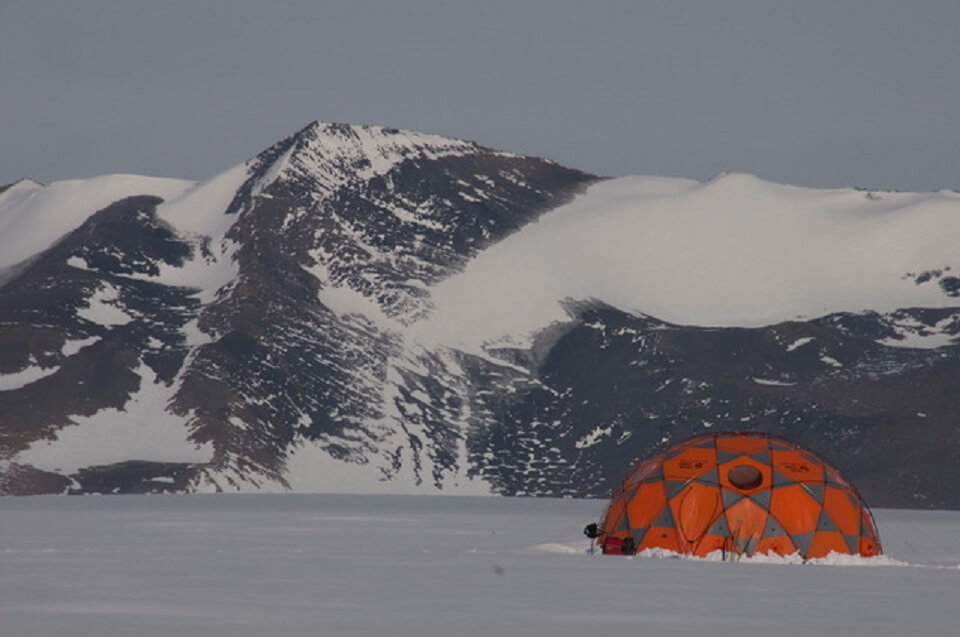Research sheds new light on the role of sea ice in controlling atmospheric carbon levels

A new study led by Keele University has highlighted the crucial role that sea ice across the Southern Ocean played in controlling atmospheric carbon dioxide levels during times of past climate change, and could provide a critical resource for developing future climate change models.
Led by Keele’s Professor Chris Fogwill, the international team of researchers has demonstrated that seasonal growth and destruction of sea ice in a warming world enhances the amount of marine life present in the sea around Antarctica, which draws down carbon from the atmosphere and stores it in the deep ocean.
Having captured half of all human-related carbon that has entered the ocean to date, the Southern Ocean around Antarctica is crucial for regulating carbon dioxide levels resulting from human activity, so understanding the processes that determine its effectiveness as a carbon sink through time are crucial to reducing uncertainty in future climate change models.
To understand this process further, Professor Fogwill and his team studied data relating to one period where atmospheric CO2 levels changed rapidly. This occurred after the Last Ice Age, around 18,000 years ago, when the world transitioned naturally into the warm interglacial world we live in today.
During this period, CO2 rose rapidly from around 190 parts per million (ppm) to 280 ppm over around 7,000 years, but one period in particular stands out; a 1,900 year period where CO2 levels plateaued at a nearly constant level of 240 ppm.
The cause of this plateau, which occurred around 14,600 years ago, is unknown, but understanding what happened during this period could be crucial for improving climate change projections.
Lead author Professor Chris Fogwill, Director of Keele’s Institute for Sustainable Futures said: “The cause of this long plateau in global atmospheric CO2 levels may be fundamental to understanding the potential of the Southern Ocean to moderate atmospheric CO2.”
To resolve this question researchers from Keele University Ice Lab and UNSW Sydney travelled to the Patriot Hills Blue Ice Area of Antarctica to develop new records of evidence of marine life that are captured in ice cores, with support from Antarctic Logistics and Expeditions (ALE).
Blue ice areas are the perfect laboratory for Antarctic scientists due to their unique topography. Created by fierce, high-density katabatic winds, the top layer of snow is effectively eroded, exposing the ice below. As a result, ice flows up to the surface, providing access to ancient ice below.
Professor Chris Turney, a visiting Fellow at Keele’s Institute for Liberal Arts and Sciences from UNSW Sydney said: “Instead of drilling kilometres into the ice, we can simply walk across a blue ice area and travel back through time.
“This provides the opportunity to sample large amounts of ice for studying past environmental changes in detail. Organic biomarkers and DNA from the Southern Ocean are blown onto Antarctica and preserved in the ice, providing a unique record in a region where we have few scientific observations.”
Using this approach the team discovered that there was a marked increase in the number and diversity of marine organisms present across the 1,900 year period when the CO2 plateaued, an observation which had never been recorded before.
This provides the first recorded evidence of increased biological productivity and suggests that processes in the high latitude Southern Ocean may have caused the CO2 plateau. However, the driver of this marked change remained unknown, and the researchers used climate modelling to better understand the changes in the Southern Ocean to understand the potential cause.
This modelling revealed that the plateau period coincided with the greatest seasonal changes in sea ice during a pronounced cold phase across the Southern Ocean known as the Antarctic Cold Reversal. During this period, sea ice grew extensively across the Southern Ocean, but as the world was warming rapidly, each year the sea ice would be rapidly destroyed during the summer.
Their findings have been published in the journal Nature Geoscience.
Professor Fogwill added: “Whilst recent reductions in emissions due to the Covid-19 pandemic have shown that we can reduce CO2, we need to understand the ways in which CO2 levels have been stabilised by natural processes, as they may be key to the responsible development of geoengineering approaches which remain fundamental to achieving our commitment to the Paris Agreement.”
Keele PhD student Matthew Harris, a co-author on the paper said: “Sea ice is a crucial but poorly understood component of the global carbon budget. It interrupts air-sea exchange when fully intact. However, when it breaks up and exposes the underlying ocean, it feeds organisms that draw CO2 down from the atmosphere.”
The researchers will now use these findings to underpin the development of future climate change models. The inclusion of sea ice processes that control climate-carbon feedbacks in a new generation of models will be crucial for reducing uncertainties surrounding climate projections and will help society adapt to future warming.
Picture credit: Professor Chris Turney
Most read
- Keele ranks among England’s Top 15 universities for combined research and teaching excellence
- Reunion for Keele's 'pioneer' graduates
- Keele Professor receives Lifetime Achievement Award for significant impact on healthcare research
- Keele researcher awarded Academy of Medical Sciences funding
- Previously unknown details of aphids in flight will contribute to improved crop security
Contact us
Andy Cain,
Media Relations Manager
+44 1782 733857
Abby Swift,
Senior Communications Officer
+44 1782 734925
Adam Blakeman,
Press Officer
+44 7775 033274
Strategic Communications and Brand news@keele.ac.uk.

